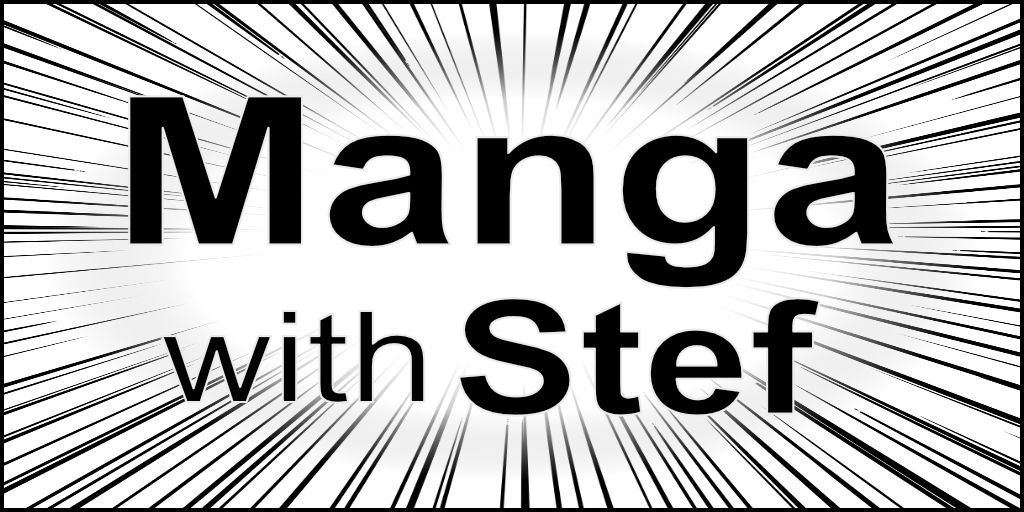Text Bubbles And Their Variations
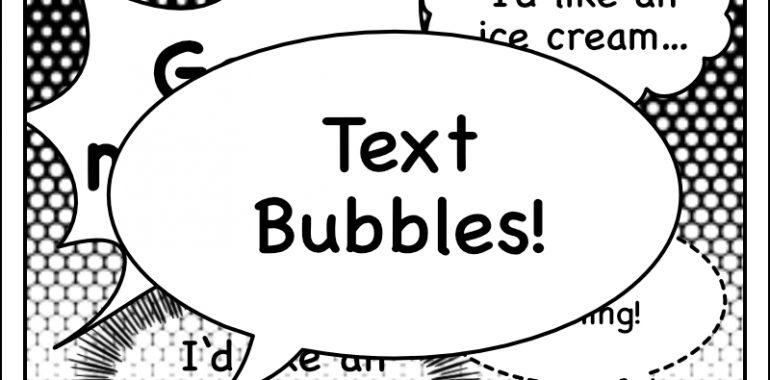
Text Bubbles And Their Variations
In this article, we are going to discover what are text bubbles, and what do their variations represent. You will learn what are the parts of a text bubbles, and how these can be modified to render different voice effects.
Note that I will focus primarily on text bubbles used in manga, but this content shall remain valid for comics and bandes dessinées.
What is a text bubble?
A text bubble is a mechanism used in comics to render speech. This can be used to image the speech of characters or sentences pronounced by a narrator.
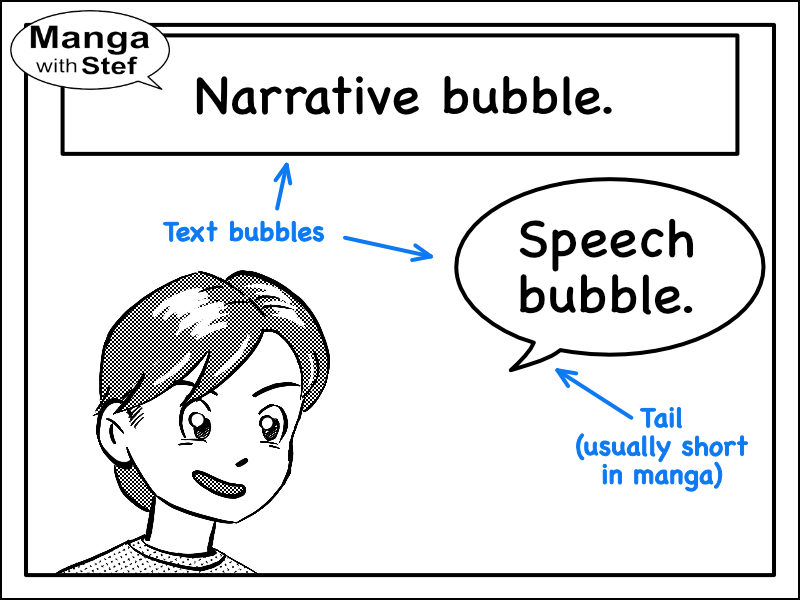
A text bubble generally consists of a shape that will contain the text being spoken and that floats around the speaker, like a soap bubble. That shape will vary according to different parameters we are going to see.
Speech bubbles
In the case of characters talking, text bubbles will be called speech bubbles.
As an artistic representation of speech variations, speech bubbles can be found under a lot of forms. These will be a mix of the artist’s style and standards that have been defined against time.
Speech bubbles can be distinguished from narrative bubbles because of their tail. The tail is a protrusion that extends from the bubble and points toward the speaker. It helps identifying who is telling the content of the bubble when different characters are present in a panel.
Narrative bubbles
In the case of narration, text bubbles will more specifically called narrative bubbles.
Narrative bubbles generally have a rectangular shape. Some artists will add some ornaments to make them evoke something specific to the context of their story, but most of the time they will just appear as plain rectangles.
How can artists render different effect with a speech bubble?
A speech bubble contains 3 graphical elements:
- The shape of the bubble
- The font used in the bubble
- The tail of the bubble
Along with the drawing of the characters’ expressions, the use of different shapes and font weights can quickly make readers hearing the voice of the characters.
And nowadays, with the wide-spreading of manga, comic and bandes dessinées around the world, many of these variations are wired into our heads. People learn to interpret them from a very young age, which makes it easy to use these variations and trigger sensations in readers’ mind.
We are now going to see what are these common text bubble variations we can find in manga.
Rendering the speech volume
One way artists use variations of the text bubbles is to render the sensation of the volume of the voice.
These variations make it easy for the readers to know when someone has a loud voice, or is shouting or whispering.
The normal voice
As a baseline, here is how we draw a text bubble for someone speaking at a normal tone:
- a round bubble (even though in old times artists used rounded square ones),
- with a pointy tail,
- and text using a normal font.
This is your standard text bubble.
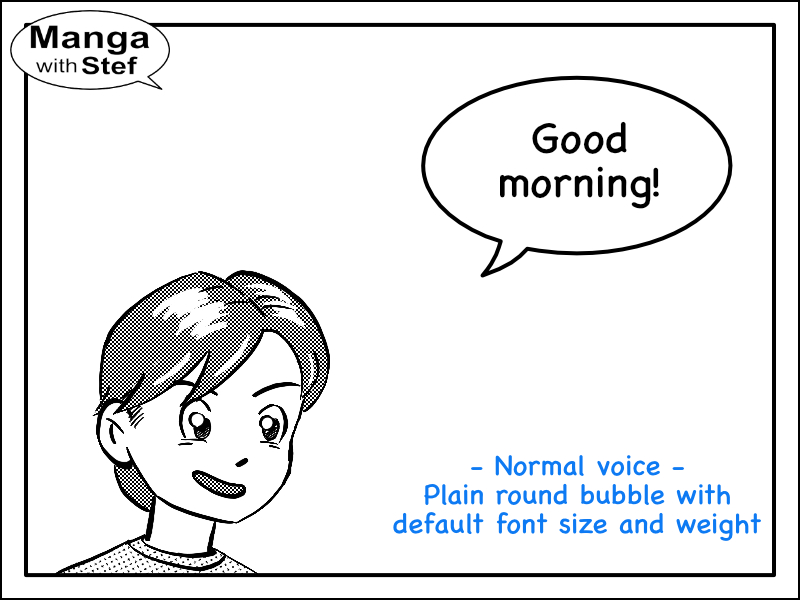
The loud voice
To express a louder voice than normal, we can simply make the font of a normal speech bubble either bigger, or bold, or both. You can feel that sensation by quickly reading the bubble in the previous image, and then the one in the next image.
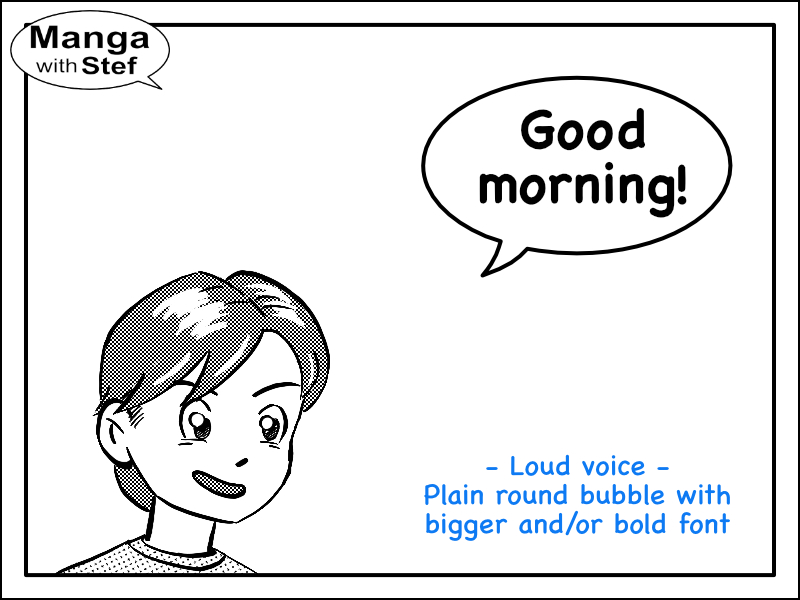
The low voice
We can also render a low voice in a similar manner by using a smaller font size.
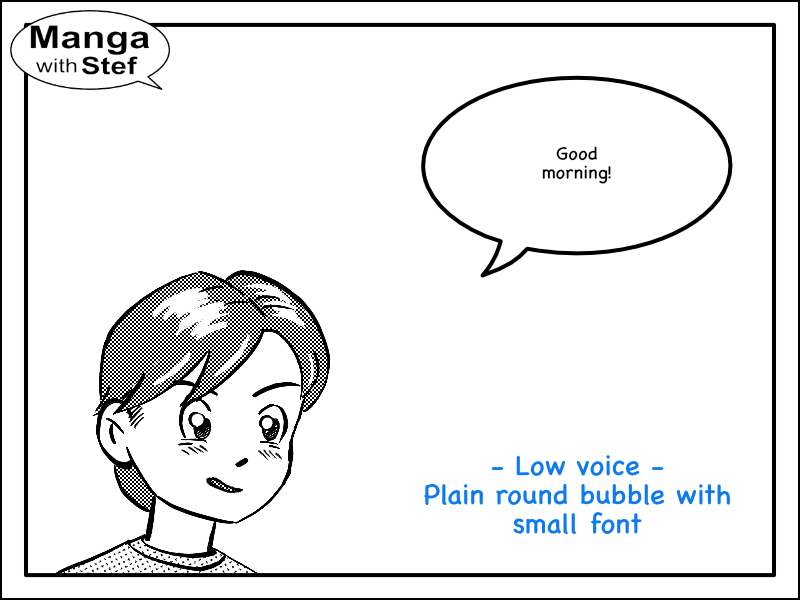
The difficulty to read the text will echo with the difficulty to hear the voice. This is as if you had to get closer to the character to “hear” what he is saying.
The whisper
When someone is whispering, artists will commonly use a normal speech bubble and tail, with a dashed outline.
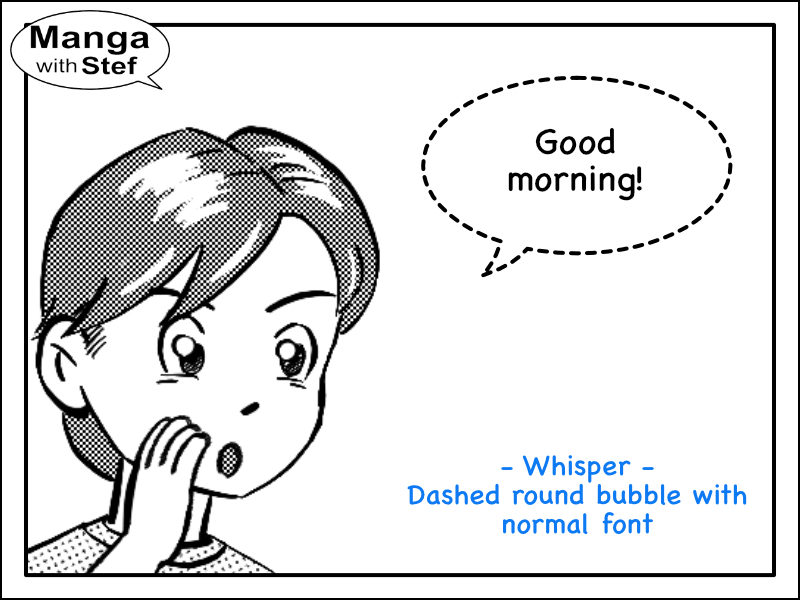
As you can see, the effect can be reinforced by making the character kind of being secret.
The shouting bubble
To image that someone is shouting, the shape of the bubble is changed into a shape with big spikes. This somehow evokes the fact that a shouting voice can be piercing your ears.
Note the way it is done in manga is different from what can be found in old comics. In manga, the line between two spikes in generally curved.
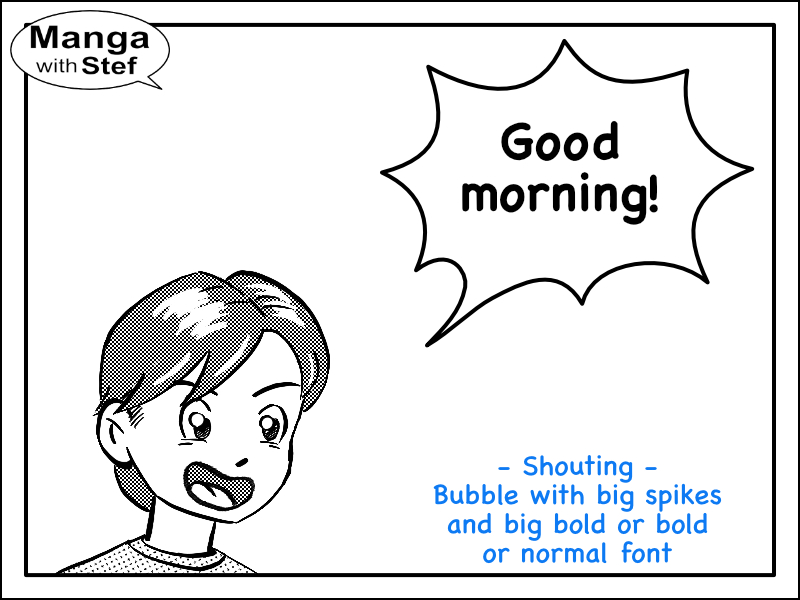
It is also possible in a manga to render screams and louder voices. To achieve this, artists will simply increase the size the bubble, and reduce the size of the speaker. This is intended to give the impression that the sound can be heard from a large distance, like miles away, or across the galaxy.
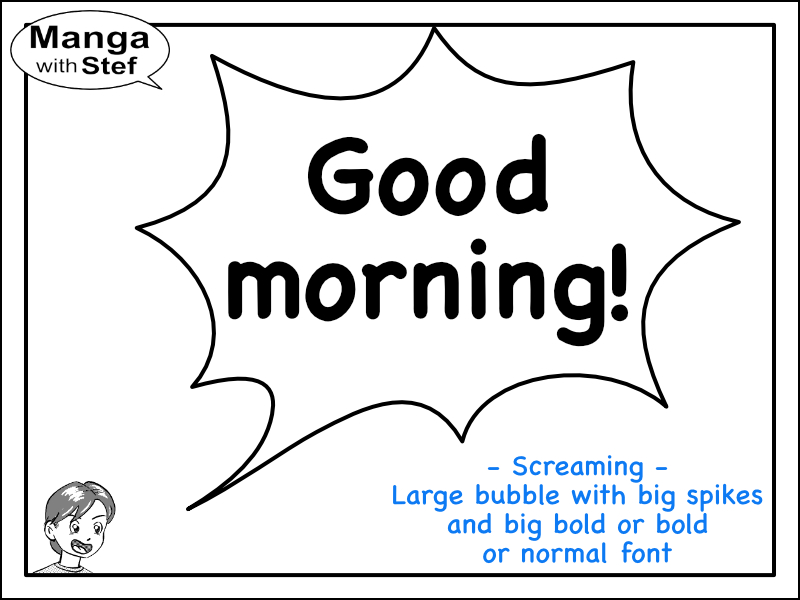
We have seen how we can represent the volume of the voice using the different attributes of the text bubble. Now, let’s see how we can render other voice tones.
Soft / mellow / happy voices
Manga artists use cloud-like shaped bubbles for many purposes. Because this cloud-like shape can evoke a cloud, a sheep’s wool or a flower, it is associated with either softness/mellowness, daydreaming or happiness.
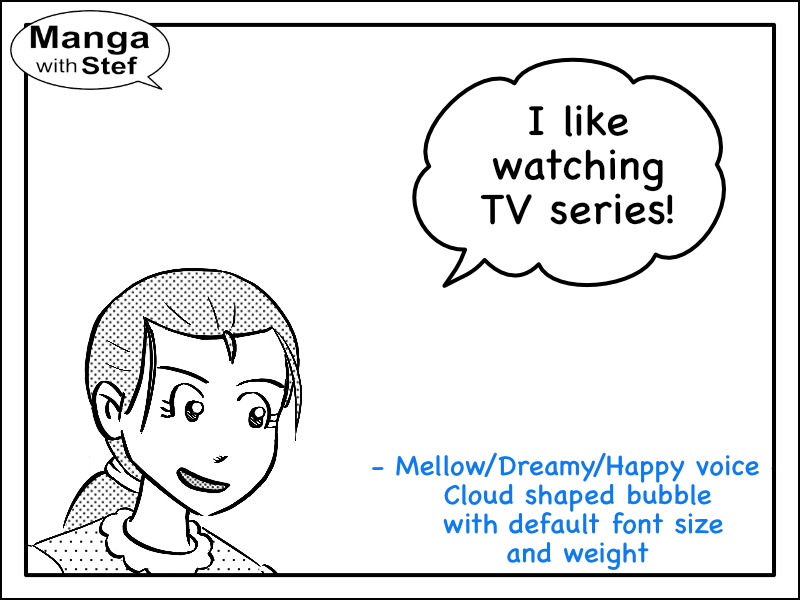
Note that the tail remains spiky. This is what makes it different from the text bubbles used to express thoughts or dreams.
Thoughts/internal speech and dreams
Artists represent text bubbles for thoughts and dreams in a really similar way:
- A cloud shaped bubble
- A tail made of circles
The main difference between a text bubble representing thoughts and one representing a dream is that the first one will contain text, whereas the second one will be using images to represent the content of the dream.
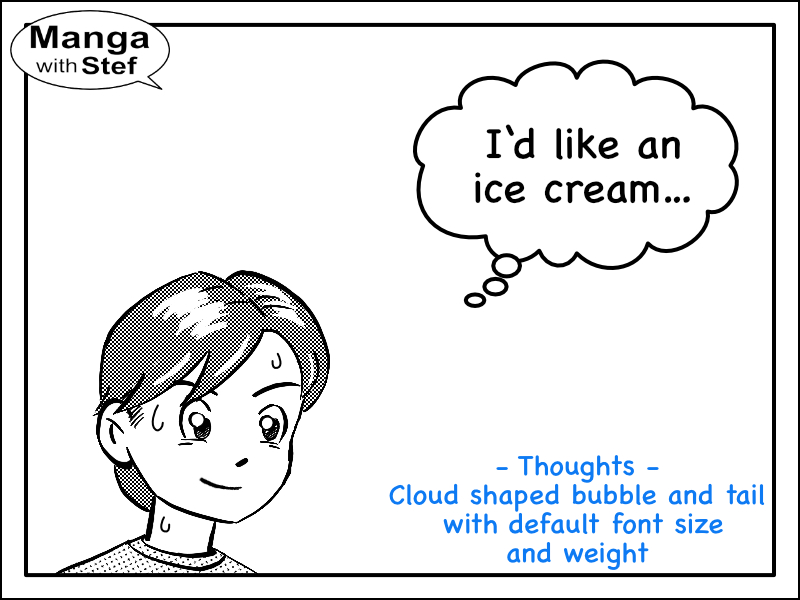
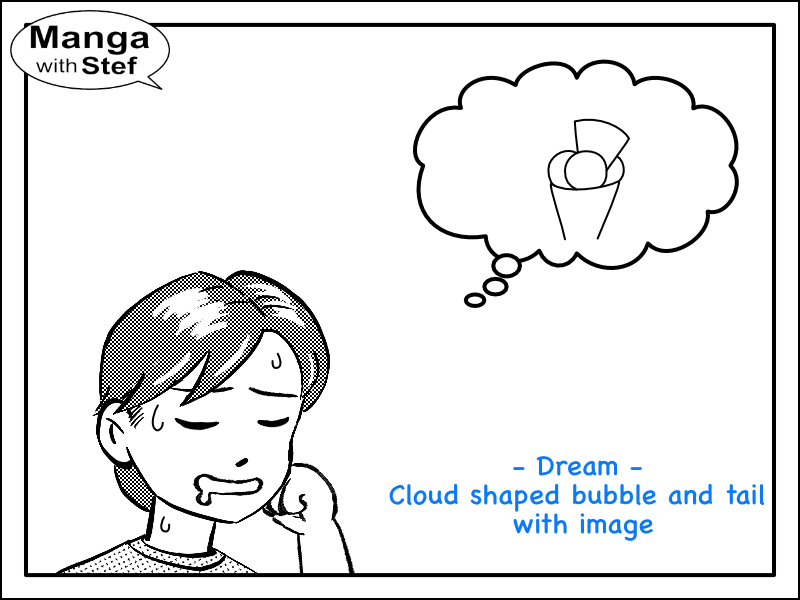
But it is also common to find in manga the use of a text bubble made of radiating rays, with no tail, to indicate thoughts or internal speech:
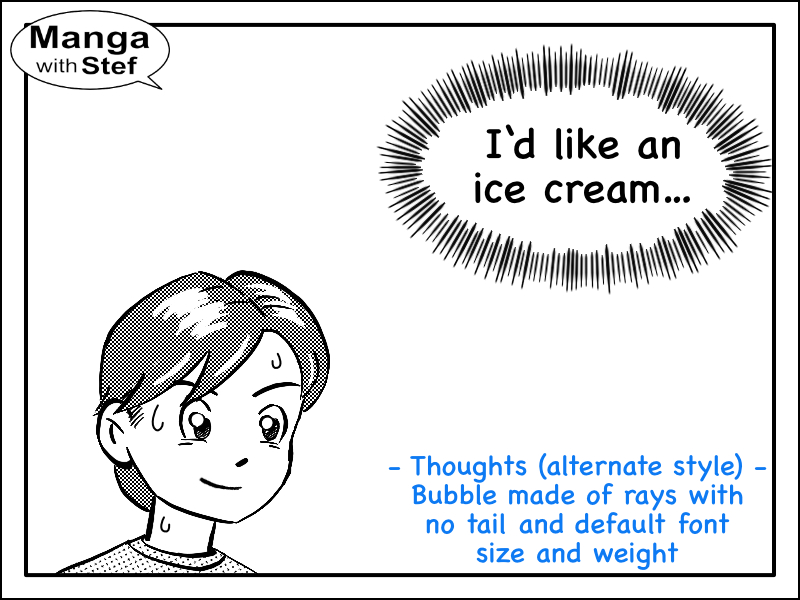
Angry voice
In order to evoke the effect of an angry voice, manga artists will add little spikes to the bubble’s shape. These spikes represent the hostility of anger towards people around.
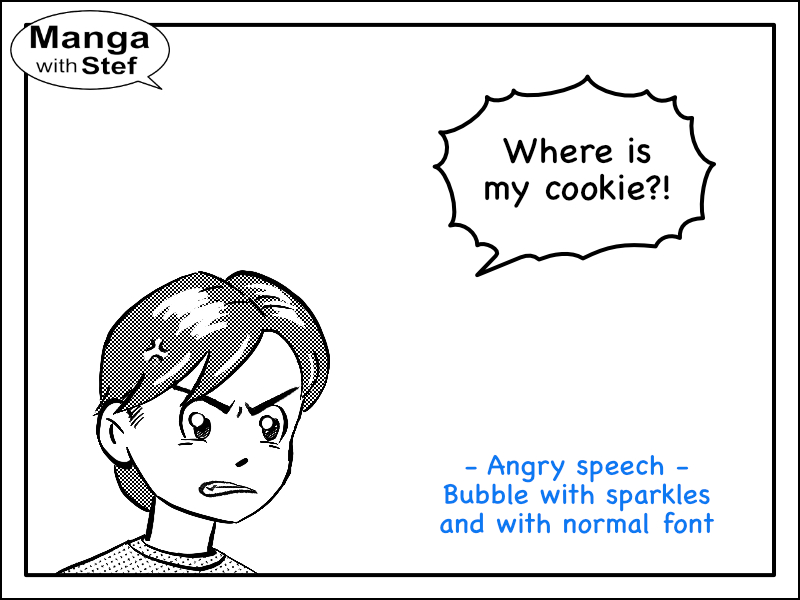
The spikes of an angry voice are less pronounced than the ones of a shouting voice. This allows the use of both types of spikes at the same time to express an angry shouting voice.
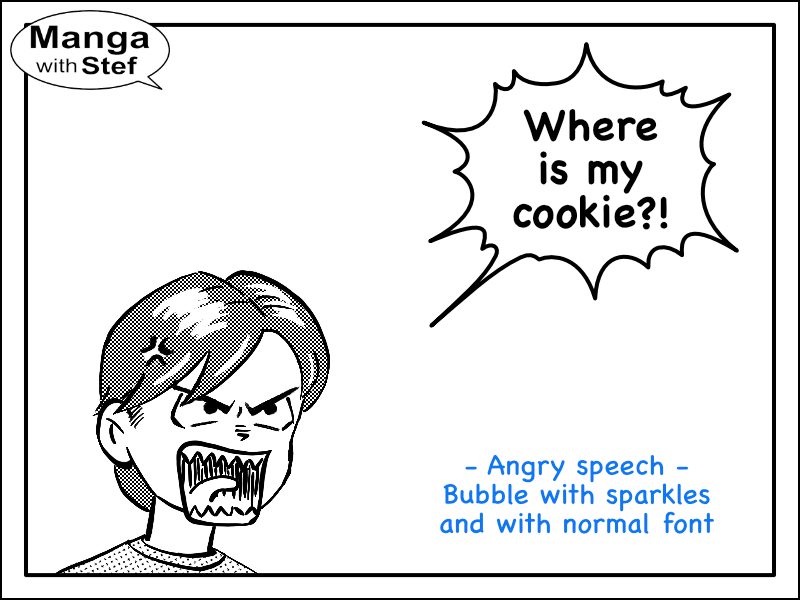
Hesitation and fear
In general, hesitation and fear might come with a shaking voice. For that purpose, manga artists use speech bubbles with a wavy outline to evoke the fluttering or the shaking of the voice under stress.
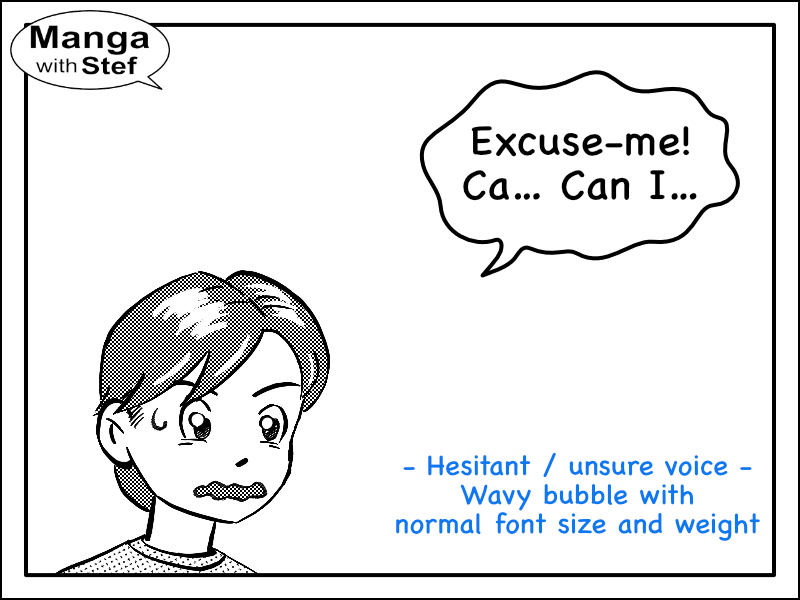
The infinite variety of text bubbles
There are many more text bubble variations, and it would take pages and pages to list all of them. But with the ones above, you have the ones that are most commonly found in manga.
But artists have found many other ways to evoke more subtile sensations. Ornaments can be added to the bubbles to add more subtleties. Fonts can be changed to evoke languages and speech accents…
I hope you found this article useful ad instructive.
Do not hesitate if you have any comment or question!
Stef
